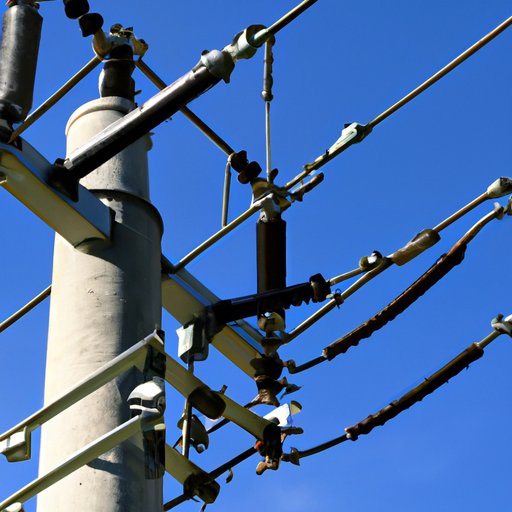Introduction
Have you ever heard the terms kilowatts and megawatts and wondered how they relate to each other? In the energy industry, these two units of measurement are essential in understanding electricity production and consumption. Kilowatts and megawatts are used to describe power generation, energy usage, and capacity. The purpose of this article is to help readers understand the relationship between kilowatts and megawatts and their significance in the energy industry.
Defining the Relationship between Kilowatts and Megawatts
A kilowatt (kW) is a unit of measurement used to describe the amount of power in a system. A watt is the basic unit of power, and a kilowatt is equal to 1000 watts. A megawatt (MW), on the other hand, is equal to 1000 kilowatts or one million watts. The difference between a kilowatt and a megawatt is significant. It is like comparing the power output of a light bulb to the power output of a wind turbine. A typical household light bulb is around 60 watts, while a wind turbine can produce several megawatts.
For example, let’s say a power plant has a capacity of 500 megawatts. This means that it can produce 500,000 kilowatts of power at any given time. If we were to convert 500 megawatts to watts, it would be equal to 500,000,000 watts or 500,000 kilowatts.
Understanding the Basics of Electricity Measurements
Electricity can be measured in a variety of units such as watts, kilowatts, megawatts, and gigawatts. The most common unit of measurement for electricity usage is the kilowatt-hour (kWh). A kilowatt-hour represents the amount of energy used by a device with a power output of one kilowatt over a period of one hour. It is often used on utility bills to indicate how much electricity a household has consumed over a billing period.
To calculate energy usage or production rates, we use kilowatts and megawatts as standard units of measurement. For instance, if a wind turbine has a capacity of 5 megawatts, it can generate 5,000 kilowatts of electricity.
Comparing Different Sources of Electricity
Electricity can be produced using a variety of sources, including solar, wind, biomass, hydroelectric, and nuclear power. By comparing the production rates of different types of electricity using kilowatts and megawatts as a standard unit of measurement, we can evaluate which sources are more efficient and reliable.
For example, a utility company may have a solar power plant with a capacity of 100 megawatts and a natural gas plant with the same capacity. However, the solar power plant may produce less energy than the natural gas plant due to changes in weather conditions that can affect sunlight exposure.
The Role of Megawatts in the Energy Industry
Megawatts play a critical role in the energy industry. They are used to describe power generation and capacity. Energy stakeholders such as utilities, regulators, and investors use megawatts to evaluate the efficiency and reliability of power plants and sources. If a power plant can generate a higher amount of megawatts, it means that it can produce more energy and meet the energy needs of a larger population.
How to Convert Kilowatts to Megawatts
Converting from kilowatts to megawatts is a simple process. To convert kilowatts to megawatts, we need to divide the number of kilowatts by 1000. For example, if a facility consumes 9000 kilowatts of electricity, we can convert it to megawatts by dividing it by 1000, which gives us 9 megawatts.
Using Megawatts to Track Trends in Energy Consumption
Megawatts can also be used to track energy consumption trends over time. By analyzing data on renewable and non-renewable sources of energy, we can gain insight into how energy consumption patterns are changing globally.
For example, according to the International Energy Agency (IEA), renewable energy production grew by 6% in 2020, despite the challenges posed by the COVID-19 pandemic. Wind and solar power were key drivers of this growth, with both technologies experiencing record installation rates in 2020.
Conclusion
In conclusion, understanding the relationship between kilowatts and megawatts is essential in the energy industry. Kilowatts and megawatts are used to describe power generation, energy usage, and capacity. Megawatts play a critical role in evaluating the efficiency and reliability of power plants and sources. By converting kilowatts to megawatts, we can easily compare energy usage and evaluate energy efficiency. Using megawatts to track trends in energy consumption can provide insight into how energy consumption patterns are changing over time. By understanding these concepts, we can make better decisions about energy usage and production that contribute to a more sustainable future.
